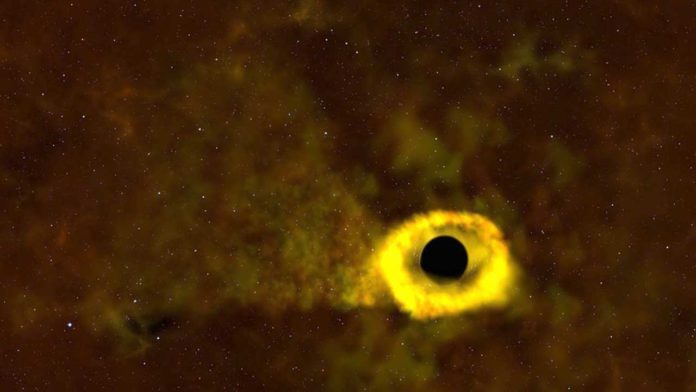NASA’s TESS mission recently captured a rare event called a tidal disruption event, an astronomical phenomenon that occurs when a black hole ripping a star to shreds as it consumes it.
This type of astronomical event happens once every 10,000 to 100,000 years in a galaxy the size of the Milky Way. Until now, scientists have witnessed 40 such events so far, but it’s still tough to spot one.
Thomas Holoien, a Carnegie Fellow at the Carnegie Observatories in Pasadena, California, said, “TESS data let us see exactly when this destructive event, named ASASSN-19bt, started to get brighter, which we’ve never been able to do before. Because we identified the tidal disruption quickly with the ground-based All-Sky Automated Survey for Supernovae (ASAS-SN), we were able to trigger multiwavelength follow-up observations in the first few days. The early data will be incredibly helpful for modeling the physics of these outbursts.”
The event was initially spotted on Jan. 29 by ASAS-SN, a worldwide network of 20 robotic telescopes headquartered at Ohio State University (OSU) in Columbus. The event was located in a part of the sky where TESS was also observing.
TESS first saw ASASSN-19bt on Jan. 21, over a week before the event, was bright enough for ASAS-SN to detect it. However, the satellite only transmits data to Earth every two weeks, and once received they must be processed at NASA’s Ames Research Center in Silicon Valley, California. So the first TESS data on the tidal disruption was not available until March 13. This is why obtaining early follow-up observations of these events depends on coordination by ground-based surveys like ASAS-SN.
Fortunately, the disruption also occurred in TESS’s southern continuous viewing zone, which was always in sight of one of the satellite’s four cameras. (TESS shifted to monitoring the northern sky at the end of July.) ASASSN-19bt’s location allowed astronomers to follow the event across several sectors. If it had occurred outside this zone, TESS might have missed the beginning of the outburst.
Patrick Vallely, a co-author and National Science Foundation Graduate Research Fellow at OSU said, “The early TESS data allow us to see the light very close to the black hole, much closer than we’ve been able to see before. They also show us that ASASSN-19bt’s rise in brightness was very smooth, which helps us tell that the event was a tidal disruption and not another type of outburst, like from the center of a galaxy or a supernova.”
The supermassive black hole that generated ASASSN-19bt weighs around 6 million times the Sun’s mass. It sits at the center of a galaxy called 2MASX J07001137-6602251 located around 375 million light-years away in the constellation Volans. The destroyed star may have been similar in size to our Sun.
A paper describing the findings, led by Holoien, was published in the Sept. 27, 2019, issue of The Astrophysical Journal and is now available online.
